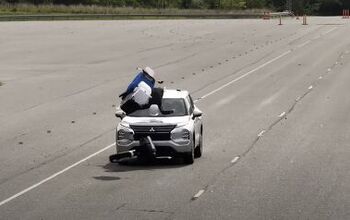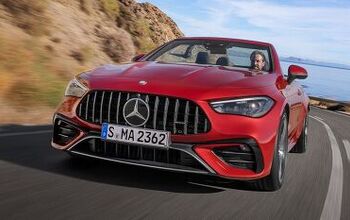Mercedes Charts Electric Course for Vans, Bringing Luxocruisers Stateside

If you’ve travelled abroad and marveled at rigs like the factory-built luxury vans (that aren’t industrial-grade Sprinters) tasked with shuttling and chauffeuring, you may be interested to learn Mercedes-Benz is planning to sell such machines in America. In addition to setting its sights on that relatively untapped market in this neck of the woods, Stuttgart is readying the roll-out of its all-electric van architecture.
First, the people carriers. Mercedes-Benz refers to them as “privately positioned midsize luxury vans”, referring not to the position of ones privates whilst driving the things but rather the intent of these vans to serve as luxury transportation for humans. This differs from converted Sprinter vans, some of which have sumptuous interiors but retain the underpinnings of a utilitarian machine designed to move cargo. On certain roads, this is evident.
During overseas hops, we’ve ridden in numerous examples of the passenger vans Merc is planning to bring here and can tell you the difference between those rigs and a converted Sprinter is stark. It surely won’t take long for livery services and the like to fill their fleets with these vans, meaning we should expect to see them in the perpetually congested pickup/dropoff lanes at LAX in short order. Mercedes believes there is growth opportunity with the V-Class, and they’re probably correct.
Underpinning these efforts will be M-B’s new VAN.EA architecture, an all-electric platform that will find homes under private vans and cargo carriers alike. Merc has already been dabbling in this arena with the eSprinter (which is different from the V-Class), installing a 113-kWh battery in a pre-production example and driving the thing from Vegas to Long Beach without stopping to recharge on the 275-mile journey. Specifics on the VAN.EA platform will appear closer to its expected introduction in 2026.
While some will mutter about range and charging opportunities for long distance deliveries, the fact remains that – in large centers – many cargo vans and passenger vans find themselves in environs suited for all-electric driving. Being stuck in LA traffic means plenty of regeneration opportunities instead of idling away fuel stores, while the van’s downtime will likely coincide with off-peak grid hours when electricity is cheaper for charging. Sure, there are numerous companies whose vehicles are operating 24/7 (if the wheels ain’t moving, the van ain’t making money) but an all-electric van will absolutely be the right fit for some customers.
[Images: Mercedes-Benz]
Become a TTAC insider. Get the latest news, features, TTAC takes, and everything else that gets to the truth about cars first by subscribing to our newsletter.

Matthew buys, sells, fixes, & races cars. As a human index of auto & auction knowledge, he is fond of making money and offering loud opinions.
More by Matthew Guy
Latest Car Reviews
Read moreLatest Product Reviews
Read moreRecent Comments
- SCE to AUX Imagine the challenge of trying to sell the Ariya or the tired Leaf.
- Offbeat Oddity I would have to test them out, but the Corolla might actually have a slight edge. I'd prefer the 2.0 in both cars, but to get one in a Civic with a decent amount of equipment, I'd be stuck with the Sport where the fuel economy suffers vs. the Corolla. If the Civic EX had a 2.0, it would be a much tougher decision.
- User get rid of the four cylinders, technology is so advanced that a four litre V8 is possible.. and plausible.. cadillac had a serious problem detuning v8s in the past, now theyre over-revving the fours and it sounds horrible.. get rid of the bosses and put the engineers in the front seat..
- BOF Not difficult: full-size body-on-frame sedan, V8, RWD, floaty land yachts. Unabashed comfort and presence. Big FWD Eldo too. While I’m at it, fix Buick much the same way just a little less ostentatious and include a large wagon w/3rd row.
- Jeff I noticed the last few new vehicles I have bought a 2022 Maverick and 2013 CRV had very little new vehicle smell. My 2008 Isuzu I-370 the smell lasted for years but it never really bothered me. My first car a 73 Chevelle and been a smoker's car after a couple of months I managed to get rid of the smell by cleaning the inside thoroughly, putting an air freshener in it, and rolling the windows down on a hot day parking it in the sun. The cigarette smell disappeared completely never to come back. Also you can use an ozone machine and it will get rid of most odors.



































Comments
Join the conversation
Minnesota > Stuttgart
V-Class looks good.